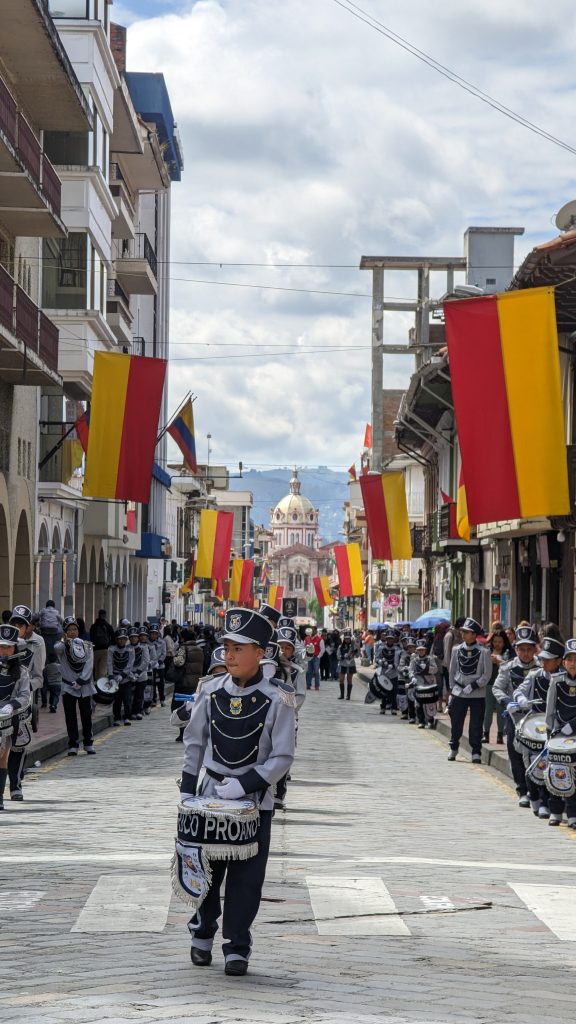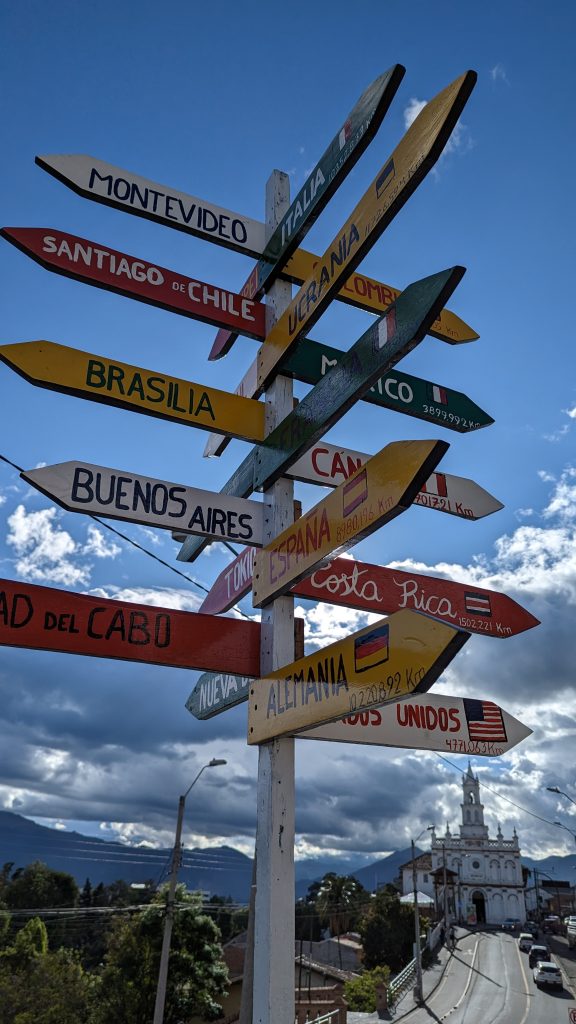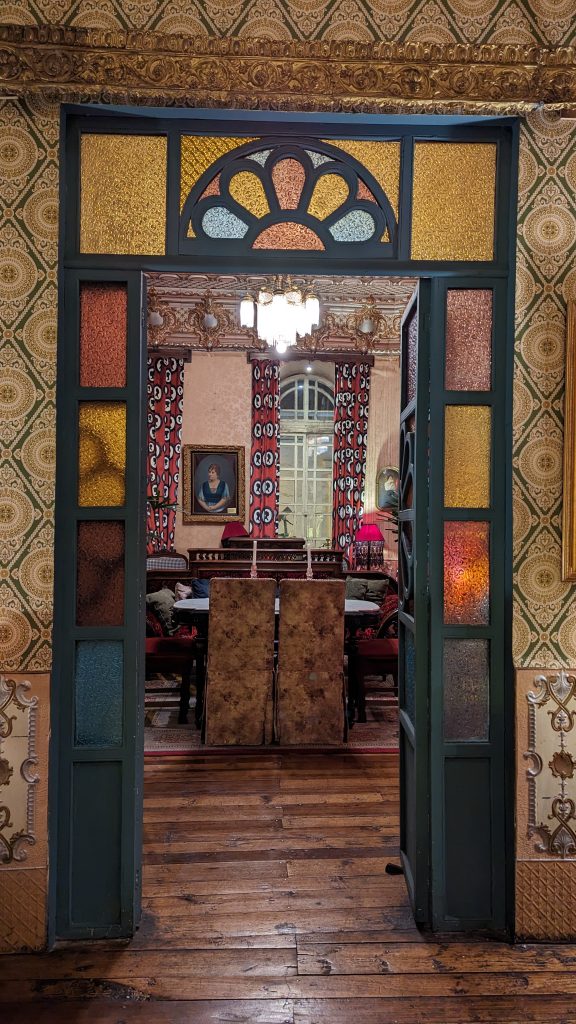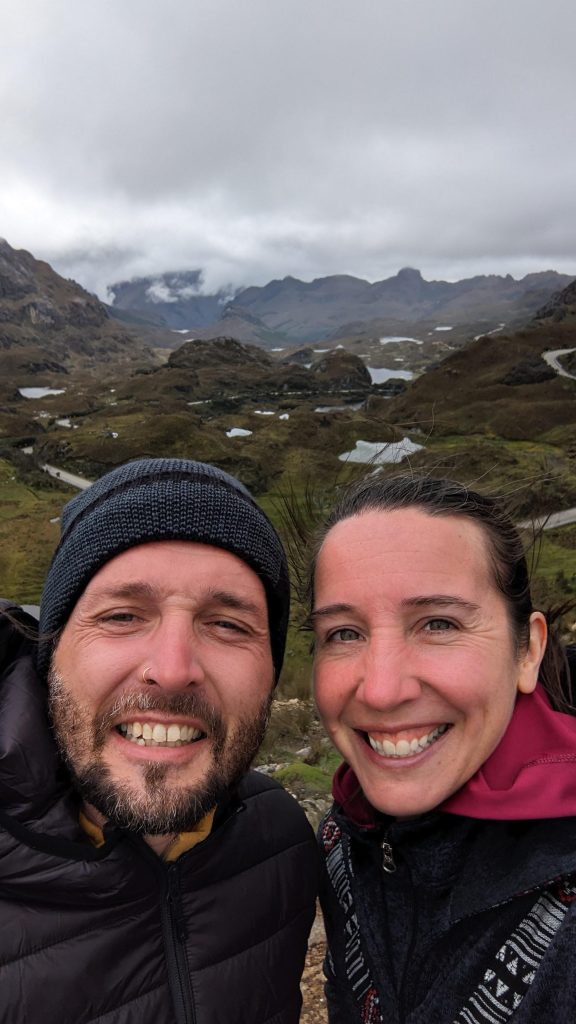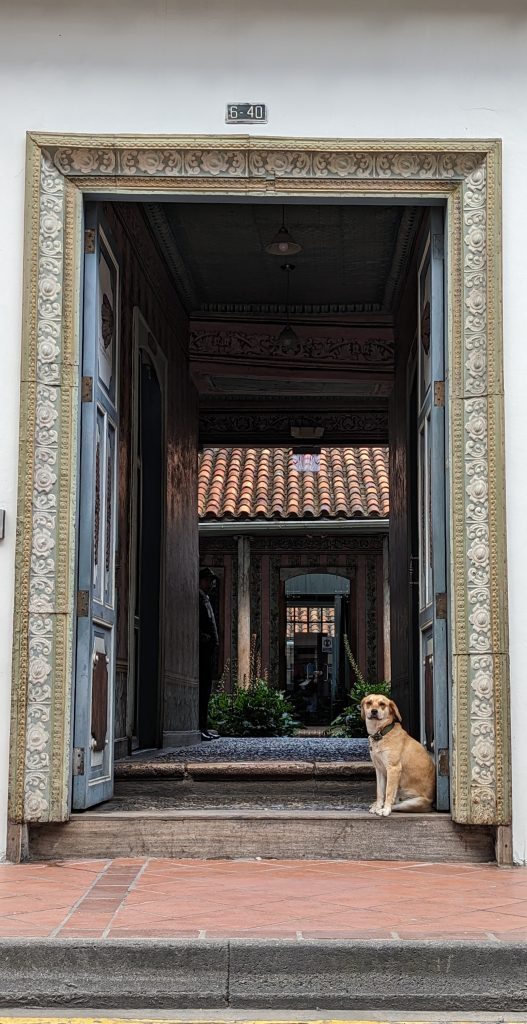Cuenca lies in the Andes at an altitude of 2,560 m / 8,400 ft. The climate, albeit a bit warmer, reminds me of Bogotá, which is situated just 80 m / 250 ft higher. It is a lovely town approximately the size of Graz, the town where I grew up in Austria. Both places are Unesco world heritage sites for good reasons. The historic center of Cuenca is well preserved and the cathedral at its center is among the most beautiful ones I have seen.
Cuenca is a safe and tranquil town. The Tomebamba River, which flows right through it, invites you for walks along its tree-lined and incredibly green lawns on the riverbank. If you plan to settle here, you should get a dog–both of you will be very happy with the walks! Several thousand expats, mostly from the US, have made Cuenca their home. For good reasons: the living quality is very high and it’s a very walkable town, which also has a tram line and several bus lines. We lived so close to the center that I never used public transport, being able to and enjoying walking everywhere.
Apart from walking, of course, I was running too. I was very happy to find a public running track in Parque de la Madre. I love running on a track and the last time I could do so was in July of 2022 in Berlin. The altitude made it way harder than back then. This will probably remain the highest track I will have run on in my life!
There were several “firsts” here:
- It is the closest I have lived to the equator.
- I joined a 30 km / 19 mi mountain bike tour on an abandoned former railway line north of Cuenca through the beautiful Ecuadorian countryside. It was the highest altitude bike ride I ever did at up to 3300 m / 10700 ft.
- For the first time in my life, I received an earthquake warning on my phone. I was not aware that the accelerometers from over 2 billion Android phones around the world form the largest earthquake detection network. We had two earthquakes, one with a magnitude of 5.4, which took place 64 mi /100 km away, and a second one which happened just 15 mi / 25 km away with a magnitude of 5.2. Luckily, as far as I know, no one was hurt in either of them.
- For the first time in my life, I got searched by soldiers, and by “searched,” I mean full-on hands to the wall searched in downtown Cuenca. Cuenca is a very safe city, and in order to keep it that way, a small army unit was sent into town to carry out random searches and thereby discourage organized crime from getting here.
The sun up here is very strong, you basically can’t leave the house without applying sunscreen. At the same time, it can start raining at almost any time. I mostly had a rain jacket with me when I was out and about in town. We made two trips to the nearby Cajas national park where we reached an altitude of 4160 m /13670 ft. The national park is not only home to a páramo ecosystem similar to the one we visited above Bogotá, but it also supplies more than half of the drinking water to the city of Cuenca. The Tomebamba River has its origin there too before it makes its way through Cuenca and then eventually drains into the Amazon River. Make sure to do the Laguna Llaviucu Loop in the lower parts of the national park, if you want to see some roaming llamas.
The English-speaking expat community of Cuenca is very active and every week there were several activities taking place. We joined a trip to the Cajas national park, a walk along Tomebamba River ending at a craft beer brewery, a soccer game in the local stadium, “Taco Tuesday” and “Wings Wednesday” get togethers. We also attended a sugar cane moonshine, or aguardiente, tasting by Esteban Arévalo in the nice community art space, idiomART. I usually don’t like spirits, but they converted me. Another highlight was the tour through the convencion del 45 neighborhood by Andrés Zambrano, the owner of the restaurant La Guarida. During the tour, we got to see murals inspired by the local artist Eduardo Segovia and also got to meet the artist and visit his studio. This was followed by one of the best meals I had in Cuenca at La Guarida.
Cuenca has a city bike system in place and you can find lots of bike lanes, especially in the lower parts of the town, some of which would meet Dutch standards. You see many people exercising on their mountain bikes and road bikes or running along the river and on the track in Parque de la Madre. The many squares in town, like Parque Calderón or Plaza de San Sebastian, are gorgeous too if you just want to rest for a while by sitting on one of the benches. You can find plenty of restaurant options from various cuisines in Cuenca. La Craft beer garden has a rotating tap, and one night we had luck with an excellent New England-ish IPA from Quito, presumably from the Abysmo brewery. If you like cocktails, make sure to step in to Madame, right at Parque Calderón. Built in the 1920s, much of the original style of the house has been preserved and transports you back in time. Their signature cocktail Pisco Sour 4.0 is a delight. The chocolatería Dos Chorreras had one of the best churros I have ever eaten. On Parque Calderón, I also came across an Austrian Sacher cake. The “ch” in Sacher is pronounced here like in English, which sounded amusing to me (ch is pronounced in German similar to “j” in Spanish). It resembled the original cake to some extent, but it had a different twist.
If you have problems with the altitude, I suggest going to Mercado 10 de Agosto, where you can buy coca leaves, which help in adjusting to higher altitudes. One section of this market is famous for the pork, and you see entire roasted pigs on display. In this market, you can find dozens of tiny eateries with all kinds of food if you are in the mood for local street food-style indulgences. I received a cleansing in the part of the market where all kinds of different herbs are sold. The person conducting it used herbs & scents in this process. I don’t really know anything about this ritual and I am always skeptical about such things, but I felt good afterward.
Cuenca is an almost perfect city. If there is one thing I could change about Cuenca, it would be the traffic management. Everyone who knows me knows how much I dislike the noise and air pollution cars cause inside of cities and the space they take away from the people. Ecuador is the 54th country I have been to and the 17th country I have lived in, and unfortunately like in so many cities in the Americas and other parts of the world, there are no pedestrian streets and car traffic feels almost unregulated. Cars driven at such a high altitude produce even more toxic fumes like nitrogen oxide and carbon monoxide because the gasoline does not burn as completely in the thin air. In the old town, many streets are narrow and sometimes you can smell the fumes, which apart from being unhealthy is not a pleasant experience. Cuenca introduced a tram line to the city in 2020, which must be one of the, if not the highest, operating tram line in the world and I am sure in the long run they will also come up with other solutions to reduce car traffic and make the life for the people inside the city even more liveable and for visitors more pleasant.
Although Bee & I are big city people, I loved my time here and would definitely count Cuenca as one of my top cities in Latin America.
